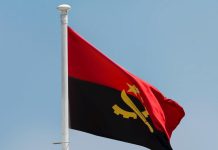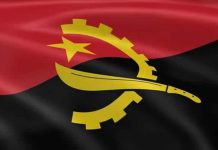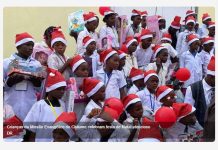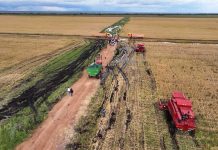Africa-Press – Angola. The expansion of infrastructure and the acquisition of new equipment for the National Institute of Fisheries Research (INIP), with a view to providing better comfort to human capital, in general, and to scientists, in particular, are among the priorities of the Ministry of Fisheries and Marine Resources.
According to the holder of the portfolio, Carmen Neto, who did not advance the date for the start of the works, the sector is working towards building a new building and expanding marine research infrastructures, to improve the working conditions of professionals. of the fisheries segment.
Speaking to the press this Saturday, at the end of a visit to the infrastructures of INIP and the Support Center for Artisanal Fishing (CAPA), both located on the island of Luanda, the minister acknowledged the existence of a considerable increase in demand for INIP’s services, a fact that obliges the ministerial department to work towards expanding workspaces and providing the institution with new technological means.
The minister gave a positive note to the work being carried out by this research institution, which has demonstrated a high standard of quality in research applied to the fishing sector.
Questioned about the existence of several inoperative vessels or sunken boats along the Angolan coast, Carmen Neto made it known that the sector will work towards accelerating the process of removing these obstacles at sea, as they represent a danger to navigation and occupy spaces where they should dock other ships in activity.
As an example, he advanced that the sector will need the space adjacent to the INIP (Luanda Island), where there are several ships out of service and the wreckage of vessels that must be removed from this space, to allow the Angolan scientific research vessel to “Baía Farta” can dock in that perimeter, soon.
In turn, the director of the National Institute of Fisheries Research, Filomena Vaz Velho, said that, in addition to the need for rehabilitation and expansion of work areas, INIP also needs a new automated biotoxin laboratory, to decongest the current manual equipment. .
Additionally, the official underlined that the institute needs at least 30 new professionals, to respond to the demand for the services provided and to replace the vacancies that will be left by former employees who will soon be undergoing renovations.
With a current staff of 60 employees, INIP, built in 1957, is dedicated to scientific research, maintenance and conservation of aquatic ecosystems, as well as the hygienic and sanitary quality of fishery products and their by-products.
As for the Artisanal Fishing Support Center (CAPA), the Minister for Fisheries and Marine Resources referred that this infrastructure also needs the intervention of the ministerial department, in order to give “body” to the new fish unloading mechanism, embodied in the discharge of marine species with greater phytosanitary security.
“Fish brought from the sea cannot continue to be unloaded at any point or place. However, we are going to make the best use of this CAPA, to absorb the volume of marine resources in that location”, she added.
Degradation of the pier bridge leaves the market inoperable
As Matilde Viegas, deputy coordinator of the management committee of the Distributing Company of Fish Products (EDIPESCAS), said, CAPA continues to function timidly and without the presence or adherence of fish sellers, due to the degradation of the pier bridge that “it is not able to support artisanal or small vessels”.
He referred that the market adjacent to the pier bridge has the capacity to accommodate 149 traders, but so far no trader has access to the space, due to lack of fish.
Given this scenario, he added, CAPA has provided only minimal services, centered on supplying fuel and water to artisanal vessels, as well as unloading fish from larger vessels (up to 15 meters).
In addition to the poor condition of the pier, he also pointed out the shortage of refrigerated equipment as another constraint that hinders the presence of traders in the market.
For Matilde Viegas, the solution to the identified problems essentially involves building a new pier, repairing the refrigerated equipment and the ice factory.
He highlighted that CAPA has two refrigerated conservation chambers (30 tons each) and a refrigeration tunnel, equipment that has been inoperative since the inauguration date of this infrastructure.
Inaugurated in 2016, CAPA was handed over to EDIPESCAS in 2018, for its operation and management.
The purpose of the visit was to assess the state of operation of the State’s fishing assets, as well as assess the real benefits that infrastructure has provided operators in the fishing segment.
According to the minister, the field activity also served to clarify that the sector needs to continue working, fundamentally, in order to improve the working conditions of all operators in the fishing value chain.
In addition to this Saturday’s visit, last Friday (the 9th), the delegation from the Ministry of Fisheries and Marine Resources also verified the functional state of the infrastructures in the fishing areas of Ramiros and the beach of “Buraco” (municipality de Belas), as well as Cabo Ledo, Quissama municipality, in Luanda.
Next Tuesday (the 14th), this ministerial department will continue with the field activity at EDIPESCAS.
For More News And Analysis About Angola Follow Africa-Press






